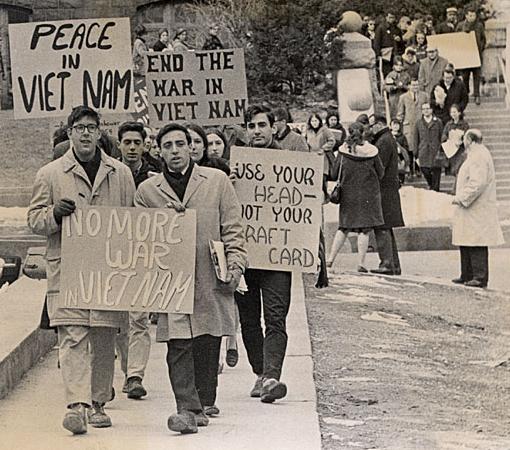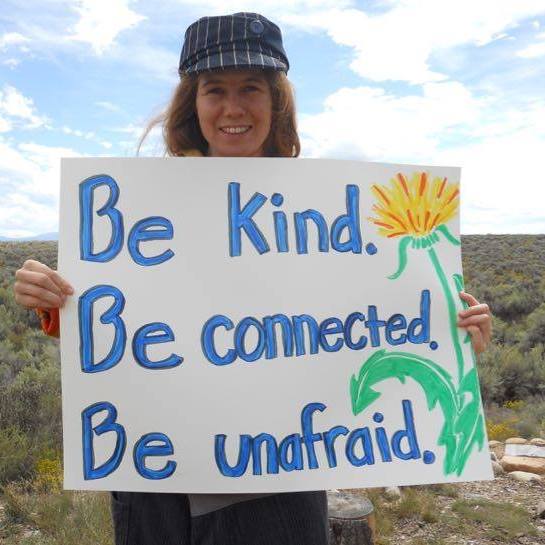
We should celebrate the effective and versatile tactic of the teach-in.
One of the largest teach-ins during the Vietnam War, for example, was held on May 21st-23rd, 1965 at UC Berkeley with 10-30,000 students attending. The State Department was invited to send a representative, but declined. An empty chair was set on the stage during the teach-in with a sign that read “Reserved for the State Department” taped to the back.
“A teach-in is similar to a general educational forum on any complicated issue, usually an issue involving current political affairs. The main difference between a teach-in and a seminar is the refusal to limit the discussion to a specific frame of time or a strict academic scope. Teach-ins are meant to be practical, participatory, and oriented toward action. While they include experts lecturing on the area of their expertise, discussion and questions from the audience are welcome. ” – Wikipedia
As a nonviolent action, a teach-in is often offered in the context of protest or resistance. The first teach-in, for example, was held at the University of Michigan in 1965 to protest the Vietnam War, and was organized as an alternative to the previously planned teachers’ strike. Instead of going on strike, the professors held a teach-in, showing up at the university, but teaching about the Vietnam War instead of their regular curriculum.
Teach-ins are a powerful method of nonviolent action that have been used in a wide variety of situations. In the United States in the 1990s, a new series of teach-ins focused on the corporatization of education and on corporate power generally, called the Democracy Teach-Ins, paved the way for the massive demonstrations, including the 1999 Seattle WTO protests; and the 2003 national Books Not Bombs student strike. In 2011, Occupy Wall St. used teach-ins to inform, educate, and mobilize the massive protests against the 1%, bank bailouts, and wealth inequality.
Imagine . . . where could you offer a teach-in? How about a de-escalation training with your local police department? Or perhaps a teach-in on climate change at your city council meeting? What if you offered a teach-in on living wages to your local business associations? Maybe you could offer nonviolent communication training for the youth groups in your area . . . the possibilities are endless, and they all help to bring the skills and knowledge of a culture of active nonviolence into our communities.
Learn more about the history on Wikipedia:
https://en.wikipedia.org/wiki/Teach-in
Photo Credit: Antiwar protesters in January 1965, uwdigitalcollections – Student protesters marching down Langdon Street, CC BY 2.0, https://commons.wikimedia.org/w/index.php?curid=6329684
This article is from Rivera Sun’s book of nonviolent histories that have made our world. Click here for more information.
______________________________________

Rivera Sun is a change-maker, a cultural creative, a protest novelist, and an advocate for nonviolence and social justice. She’s a love-based revolutionary and the author of The Dandelion Insurrection, The Way Between and ten other fiction, non-fiction and poetry books. Her essays and writings are syndicated by Peace Voice, and have appeared in over a hundred journals nationwide. Rivera Sun speaks and facilitates workshops in strategy for nonviolent change across the country and around the world. She connects the dots between the issues, shares solutionary ideas, and inspires people to step up to the challenge of being a part of the story of change in our times. www.riverasun.com